Tom's Guide Verdict
The Lofree Flow84 (and Flow100) oozes minimalist charm, while its supreme build quality lends it a surprising resonance for a low profile board. Its Kailh switches and low-profile keycaps are also a joy to type on. Unfortunately, there are a few drawbacks: its battery is weak, switch options are rigid and there’s no software for remapping or flashing firmware. These are disappointing aspects given the premium price, although they don’t prevent the Flow from excelling at its fundamental purpose.
Pros
- +
Super sleek design
- +
Low profile and portable
- +
Lovely build
- +
Decent sound
- +
Pleasant switches and typing
Cons
- -
High price versus rivals
- -
Rigid switch options
- -
No software
- -
2,000mAh battery
Why you can trust Tom's Guide
The Lofree Flow84 ($159) is a low-profile productivity keyboard designed to make typing a beautiful experience, and that has a dual meaning. See, Lofree’s whole shtick is that it isn’t enough to just type well, nor to simply look good. Its keyboards must do both, and the Flow is no exception to that rule.
This ultra-portable, minimalist board is utterly charming to behold, and a joy to type on thanks to its Kailh switches and comfortable doubleshot PBT low-profile keycaps. It’s built beautifully and sounds better than I expected it to given its limited insulation and lightweight keycaps.
It’s far from perfect, though. You can pick up the excellent NuPhy Air75/96 V2, the Flow84/100’s natural low-profile rival, for around $40 cheaper. Meanwhile, customization is hamstrung by rigid switch selection and no companion app for remapping, while the battery leaves a lot to be desired.
So, could this be one of the best mechanical keyboards for you? Find out more in our full Lofree Flow84 review.
Editor’s note: the Flow is also available in a 96% 100-key layout, the Flow100. This review will cover both.
Lofree Flow84 review: Cheat sheet
- What is it? A low profile custom mechanical keyboard
- What does it cost? $159 at Lofree / $169 at Amazon
- What’s good? The looks, sound, typing and portability
- What isn’t? The battery, rigid switch choices and lack of software
Lofree Flow84 review: Specs
| Header Cell - Column 0 | Lofree Flow84 | Lofree Flow100 |
|---|---|---|
| Price | $159 | $169 |
| Switches | Lofree x Kailh Phantom (Tactile); Ghost (Linear); Wizard (Clicky) | Lofree x Kailh Phantom (Tactile); Ghost (Linear); Wizard (Clicky) |
| Hot-swappable | Yes | Yes |
| Keycaps | Dye sublimated, double-shot PBT | Dye sublimated, double-shot PBT |
| Barebones option | No | No |
| Layout | 75%, 84-keys | 96%, 100-keys |
| Stabilizers | Plastic clip-in | Plastic clip-in |
| Mount type | Gasket | Gasket |
| Case material | Aluminum | Aluminum |
| Backlighting | White | White |
| Operating systems | macOS, Windows, iOS, iPadOS, Android | macOS, Windows, iOS, iPadOS, Android |
| N-Key Rollover | Yes | Yes |
| Paired devices max | 3 (Wireless) + 1 (Wired) | 3 (Wireless) + 1 (Wired) |
| Battery | 2,000mAh | 3,000mAh |
| Battery life | 5 days (~6 hours per day) — tested | 40 hours — reported, Lofree |
| Size | 12.4 x 4.9 x 0.9 inches | 14.6 x 4.9 x 1.0 inches |
| Weight | 1.25lbs | 1.62lbs |
Lofree Flow84 review: The ups
In true Lofree fashion, the Flow is about style AND substance. A Lofree board can’t just look and sound incredible, it has to type beautifully, too. Here, the Flow doesn’t disappoint.
As sleek as they come
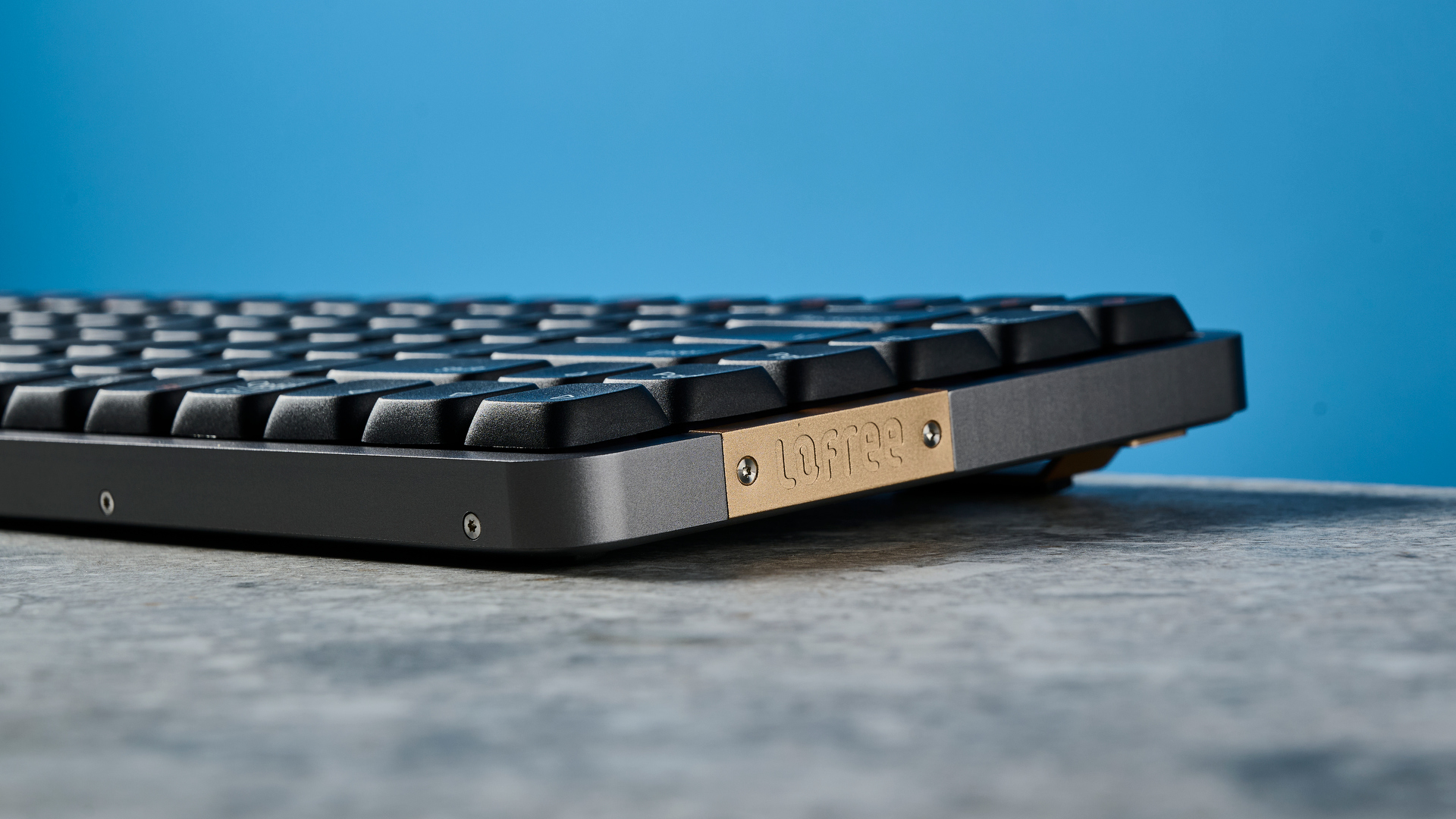
I gasped audibly when I slid the Flow84 out of its box for the first time. Both the Flow84 and Flow100 are available with either black or white keycaps, each looking as sleek and minimalist as the other — Lofree also sells numerous low-profile keycap sets separately, which will all perfectly complement the aesthetic, adding splashes of color. We tested the black caps version, which I prefer, with its stealthy edge.
Get instant access to breaking news, the hottest reviews, great deals and helpful tips.
When a piece of tech looks this incredible, it makes me want to use it all the time
Regardless of the keycap color, each version sports the same brushed metal case with rose gold metal plates adorning the side (sporting an embossed Lofree logo) and base (where they act as feet). Like its sibling, the Lofree Block ($169), the Flow sports a white-only backlight, but that’s cool — I wouldn’t want garish RGB spoiling this board.
How a product looks may not seem important, but it is. Personally, when a piece of tech looks this incredible, it makes me want to use it all the time. When I look at the Lofree Flow84, I get urges (to type). The only other keyboard that does the same thing to me is the beautiful NuPhy Halo75 V2.
Exquisite build
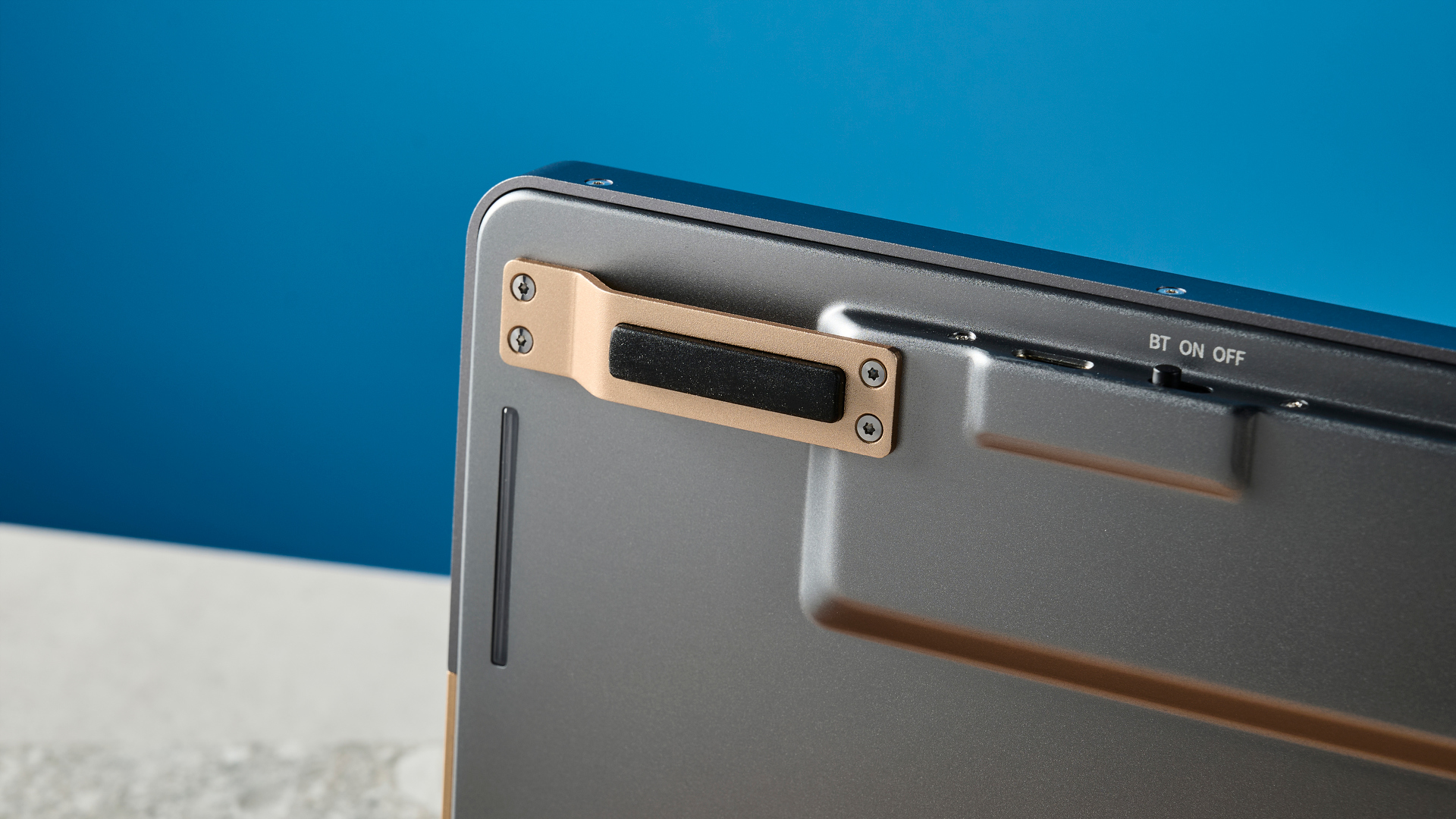
This isn’t all superficiality, though — the board is exquisitely put together. Its aluminum case results in virtually no flex, and feels extremely high quality. As is crucial for a proper low-profile board, this doesn’t come at the expense of size or weight. I had no problem sliding the Flow84 into my work bag, even while I was simultaneously transporting a set of over-ear headphones, two other keyboards, a large medium format camera and a mouse.
Resonant sound
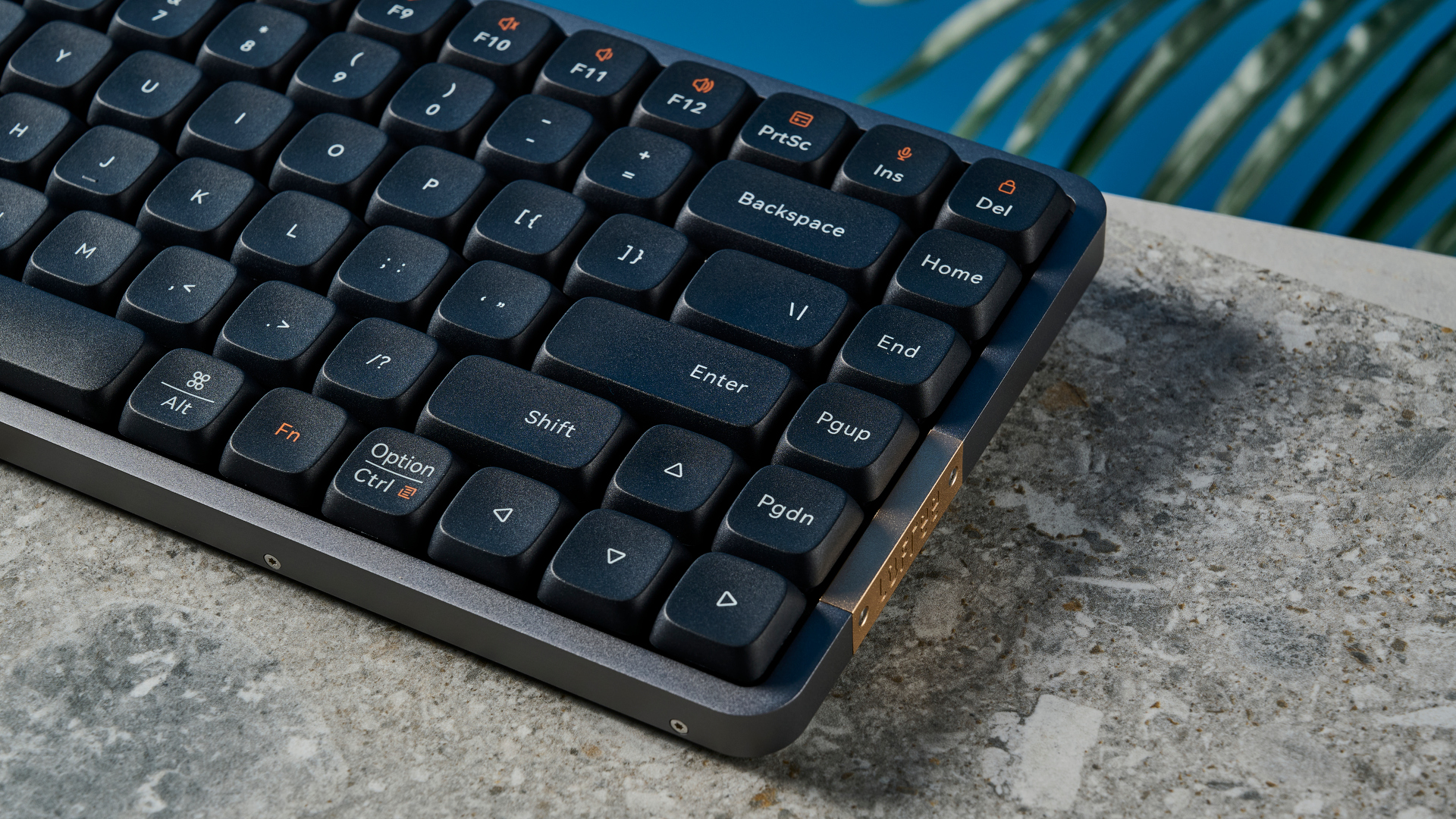
That solid build naturally benefits the acoustics of the Flow84, and I was impressed by this board’s resonance given its low profile.
The Flow84 features two layers of insulation, one of silicone and one of poron foam, both encased of course by that sturdy metal frame. This lends keystrokes a deeper thud than you’ll hear from other low-profile boards like the featherweight NuPhy Air75 V2 ($119), with its two layers of silicone dampening and plastic bottom case.
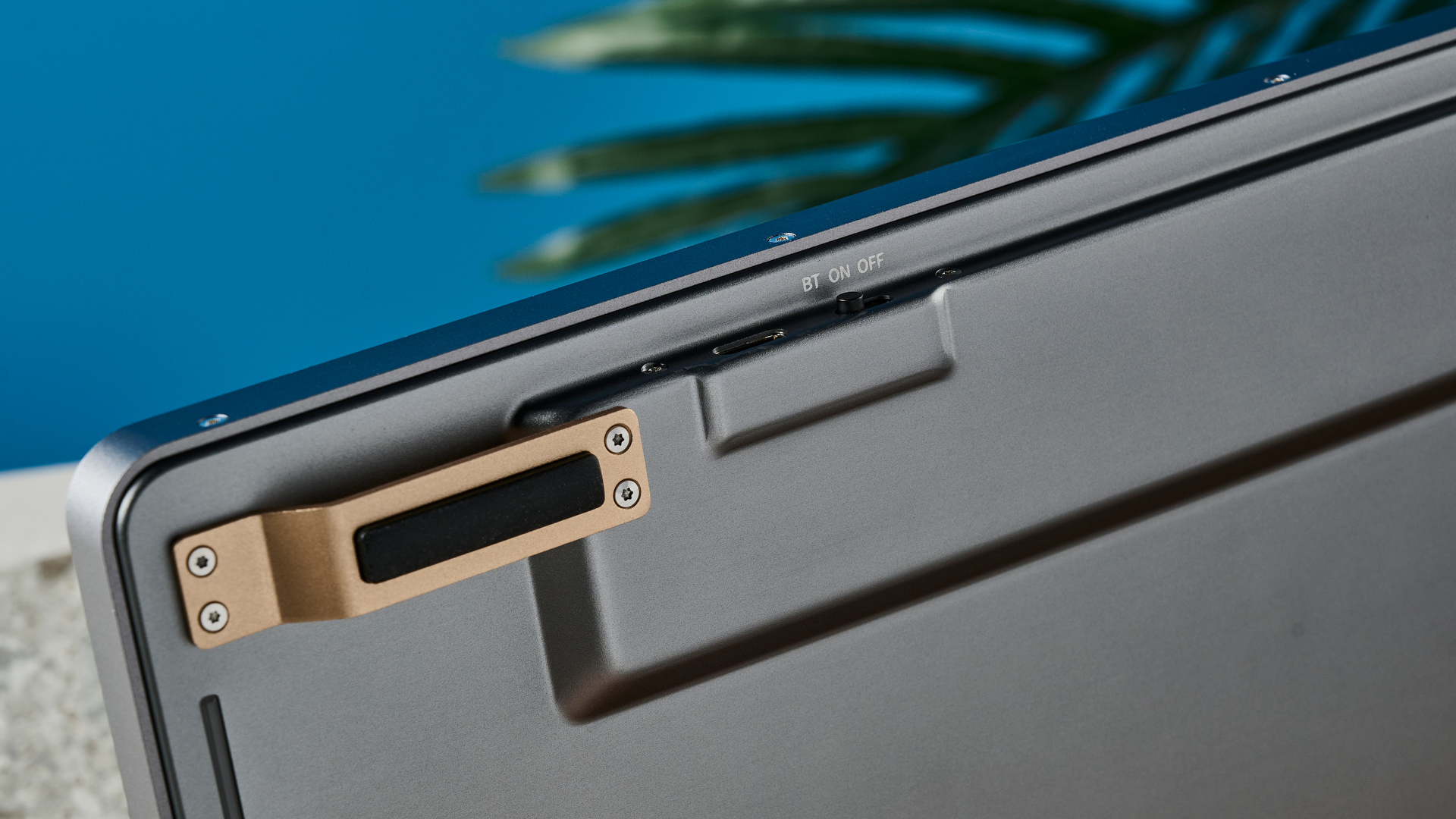
The foam gasket mounts and the thick rubber soles on the Flow84’s sturdy metal feet help absorb and channel vibrations for a deeper sound. The Flow84’s PBT keycaps are also on the heavy side for low profile caps, at 1g — versus the NuPhy Air75 V2s 0.8g caps, for context — which also adds some extra thud.
If you want the deepest, thockiest sound possible, a thicker board with more insulating layers and heavier caps like the NuPhy Halo75 V2 ($149) or Keychron V1 ($94) will suit you better. However, for a low-profile board, and all the styling and portability benefits that brings, I doubt you’ll find a much better-sounding deck than the Flow84.
Beautiful switches
Lofree markets the Flow84 as “the Smoothest Mechanical Keyboard” and, well, yeah it’s pretty darned good. I tested the Flow84 with Lofree x Kailh Phantom low-profile tactile switches, which require low actuation forces and feature a short 15.5mm spring for a comfortable bounceback. Lofree x Kailh Ghost linear switches are available (with the white board — more on this later), with Wizard clicky switches available separately.
| Header Cell - Column 0 | Lofree x Kailh Phantom | Lofree x Kailh Ghost | Lofree x Kailh Phantom Wizard |
|---|---|---|---|
| Type | Tactile | Linear | Clicky |
| Profile | Low-profile | Low-profile | Low-profile |
| Actuation force | 45+/-15gF | 50+/-15gF | 50+/-10gF |
| Travel | 2.8+/-0.25mm | 2.8+/-0.25mm | 2.8+/-0.25mm |
| Spring length | 15.5mm | 15.5mm | 15.5mm |
| Durabiility | 50m keystrokes | 50m keystrokes | 50m keystrokes |
| Price (standalone @ Lofree) | $69 (90 pieces) | $69 (90 pieces) | $69 (90 pieces) |
Here’s how these Kailh switches stack up against the Flow’s closest competitor, the NuPhy Air V2. The Lofree x Kailh Phantom switches have an actuation force of 45g, making them extremely light under the finger, with gentle tactile feedback. Both of the NuPhy x Gateron tactile options for the NuPhy Air75/96 V2 demand much higher actuation forces (55g — Wisteria / 60g — Moss), so the Flow84 is the board to choose if you prefer light-feeling tactile switches, or vice versa.
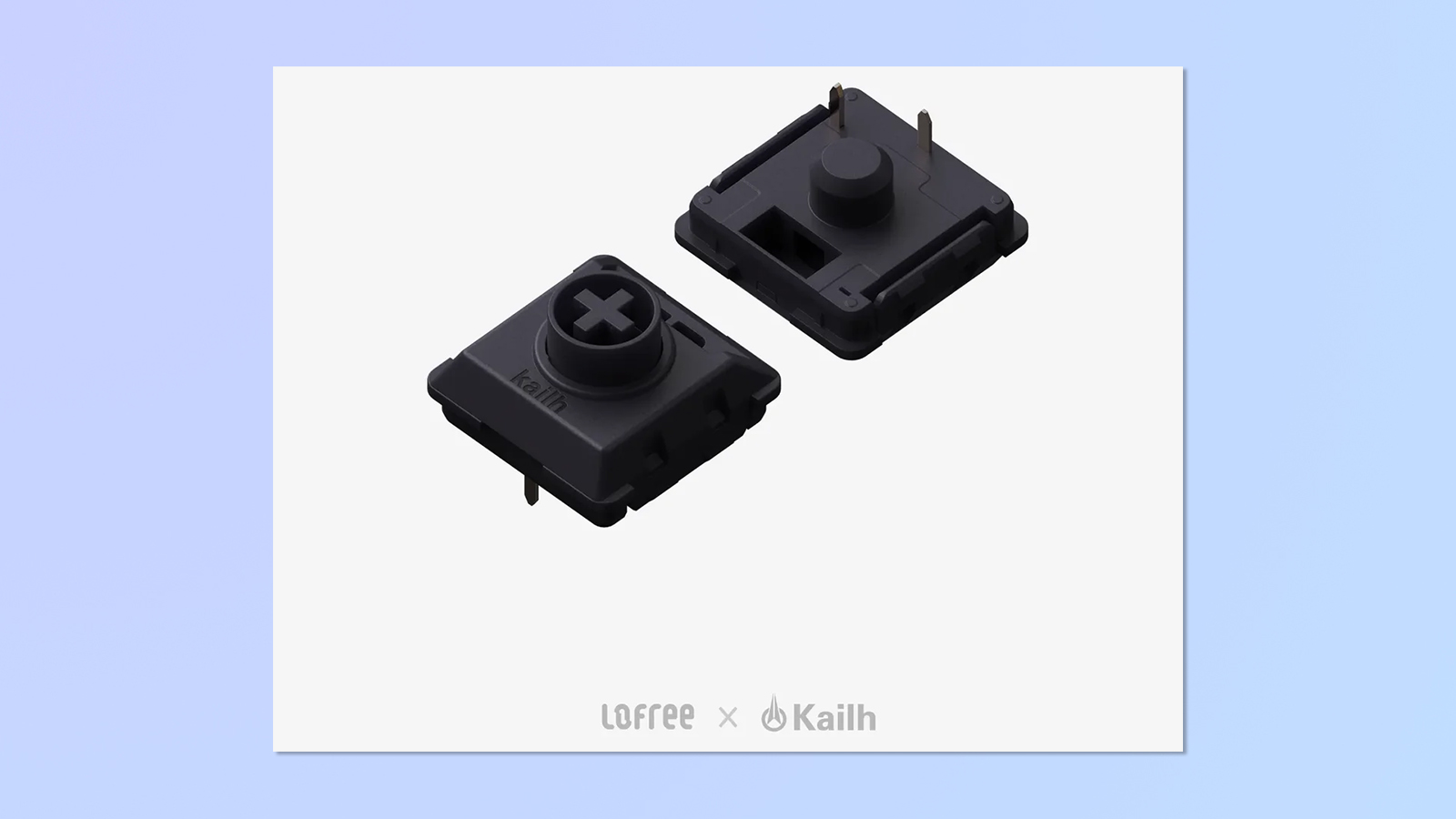
For the linear lovers out there, the NuPhy Air75/96 V2 offers much lighter switches (37g — Aloe / 45g — Cowberry), while the Kailh Ghost linear switches actuate at 50g, so the Flow will suit fans of heavier linears. There is no clicky option available for the NuPhy boards, but both manufacturers’ boards are hot-swappable.
All three Lofree x Kailh switch types feature a 15.5mm spring, 1mm shorter than the 16.5mm springs found in all the Gateron x NuPhy switch range available in the Air75 V2, resulting in a gentler bounceback.
Unrivalled typing
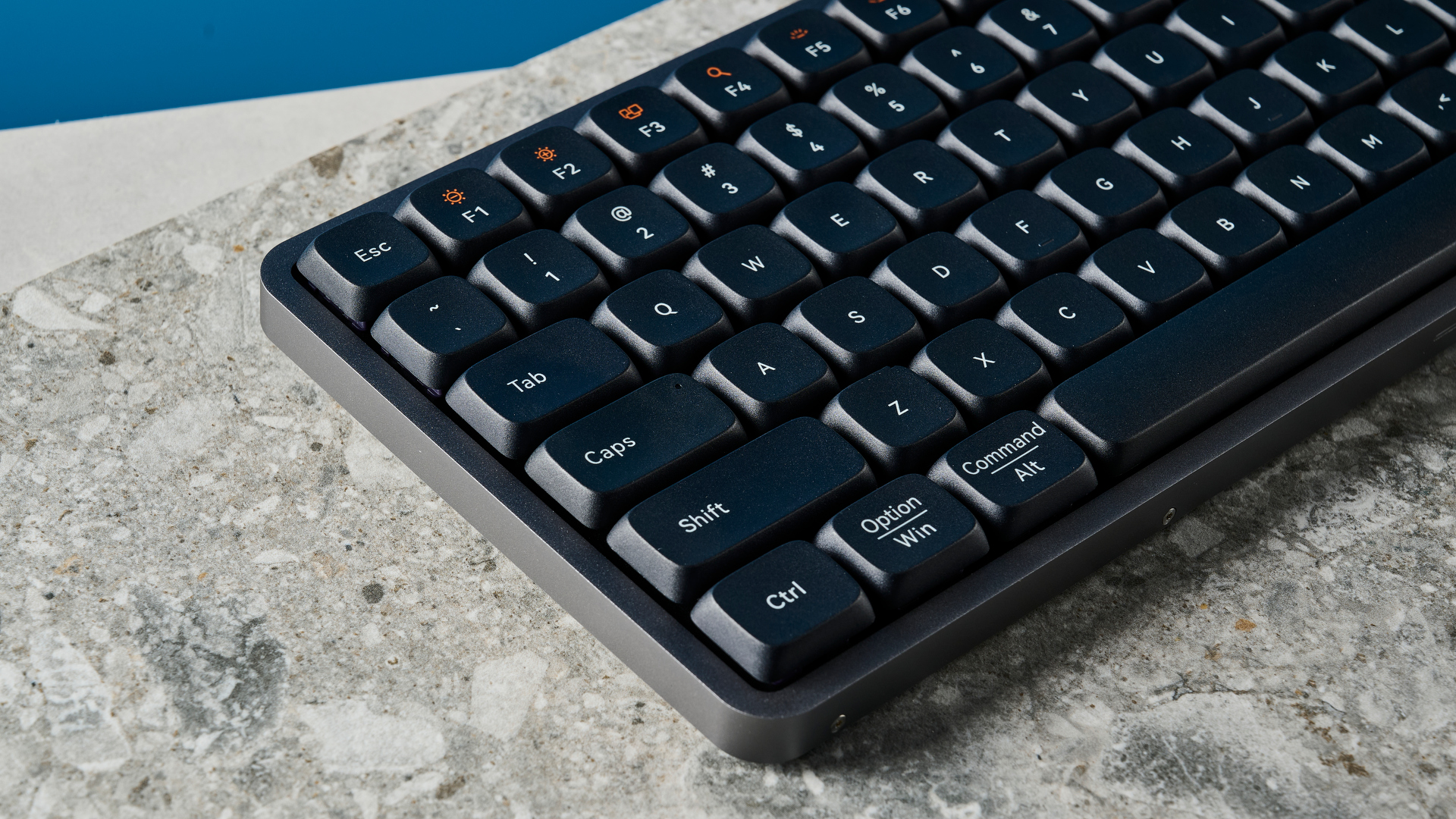
With those lightweight Phantom switches fitted, typing on the Flow is a smooth, comfortable experience even over long stints of work. The low-profile keycaps also lend themselves to fast and accurate typing, and I was able to achieve above-average type speeds and around average accuracy, as you can see in the table below, listing a selection of my type test scores on 10fastfingers.com.
| Keyboard | Words per minute (WPM) | Typing accuracy |
|---|---|---|
| Lofree Flow84 | 96 | 87.55% |
| NuPhy Air75 V2 | 90 | 81.26% |
| Logitech MX Keys Mini | 93 | 90.78% |
| Apple Magic Keyboard | 94 | 93.44% |
| Lofree Block | 84 | 83.00% |
| NuPhy Halo75 V2 | 90 | 88.21% |
| Pete's rolling averages (all keyboards) | 91.21 | 87.98% |
I’ll never pass up an opportunity to praise dual-labeled boards, either, like the Flow. As someone who switches regularly between macOS and Windows for work, I love being able to do so effortlessly and without needing pauses to figure out where Alt is.
Lofree Flow84 review: The downs
The Flow isn’t without its flaws. It’s a little pricier than its rivals, while switch choices are annoyingly rigid and there’s no companion app for remapping or updating firmware. Battery life isn’t terrible, but is easily bested by rivals.
Comparatively high price
Excellent mechanical keyboards often demand a premium, the counterweight being that the extra spend nets you higher quality components and increased longevity, often alongside refined styling and sound. All that is to say, I feel the Flow84’s $159 price tag ($169 for the Flow100) is mostly justified by its fantastic build, great looks and decent sound.
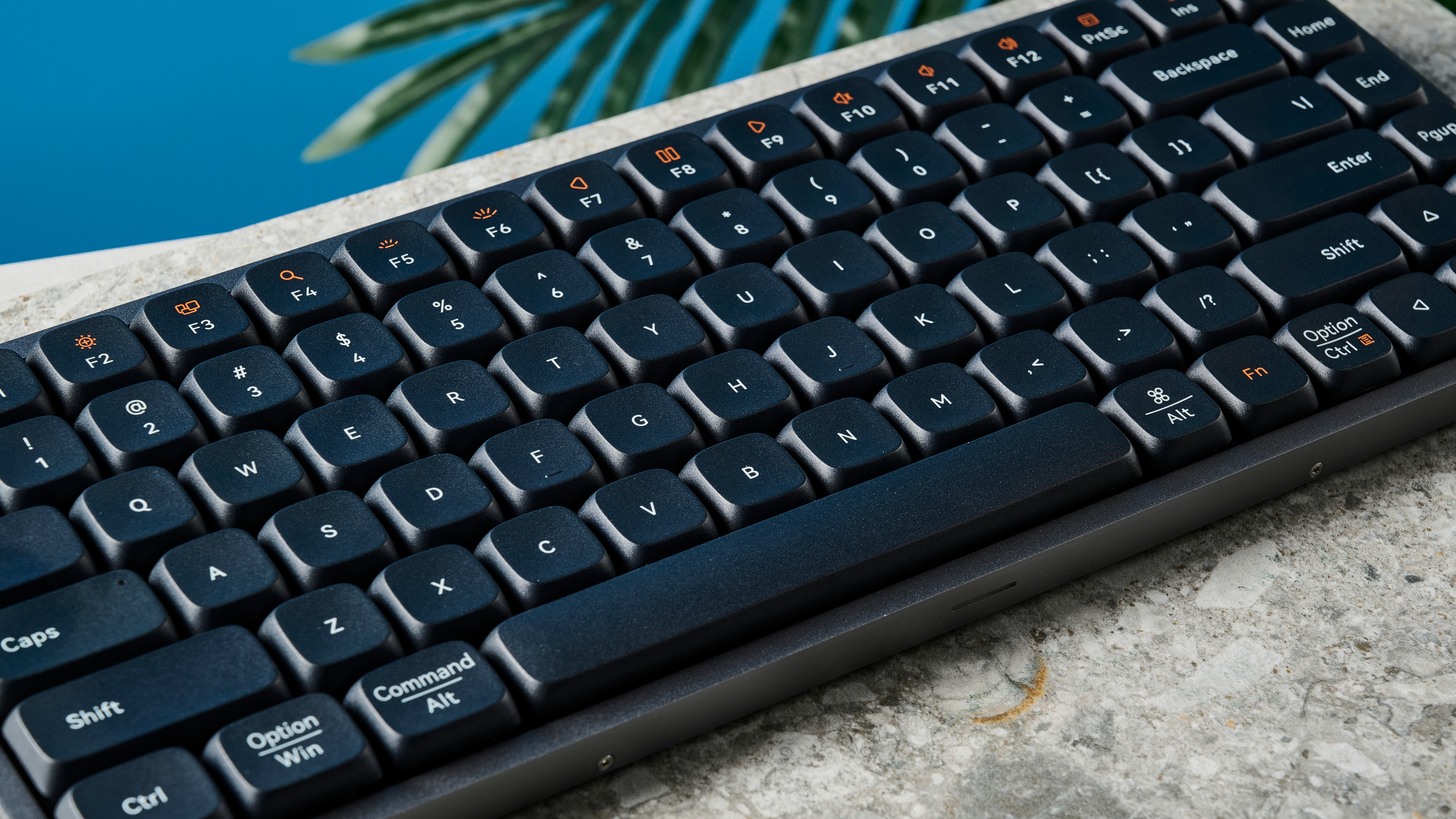
However, while price is therefore a soft con, it’s a con nonetheless. The NuPhy Air75 V2 and Air96 V2 retail for $119 and $129, so $40 cheaper at equivalent sizes. The NuPhy doesn’t sound as good and we had some firmware issues. However, in almost every other respect it’s just as good as, and in some cases better than, the Flow84, with cute minimalist charm, a wider array of switches at point of sale, and QMK firmware for remapping. If these matter most to you, the Flow’s $40 premium may seem particularly unpalatable.
Rigid switch choices
As I mentioned earlier, the Lofree x Kailh switches are great, and a sound reason to buy the Flow. Annoyingly, though, you can’t mix and match switches between variants. For example, the white keycap variant is only available with the Ghost linear switches, while the black variant is only available with Phantom tactiles. If you want to mix and match, or if you want clicky switches (not available on any variant as standard) you’ll have to spend another $59 to bundle extra switches with your board ($69 for the Flow100), or buy a set separately for $69.
No companion app

Lofree offers no remapping or companion software, putting the brand at a disadvantage against the highly customizable competition — particularly those using QMK open-source firmware like the NuPhy Air75 V2, Keychron Q3 Max ($215) and Keychron V1($94). Hell, even keyboards without QMK, like the Gamakay LK75 ($129), MelGeek Cyber01 ($149) and Epomaker TH80 Pro ($99) come with proprietary software for remapping. It’s effectively becoming an industry standard, so it’s disappointing that Lofree is lagging behind here, especially given the premium price tags of its boards like the Flow84 and Lofree Block ($169).
In addition to limiting customization, the lack of a software platform also makes me wary about bugs. If one were to experience software bugs, a companion app is often the easiest way to flash firmware and solve the issue. Thankfully, I’ve experienced no bugs so far.
Low capacity Battery
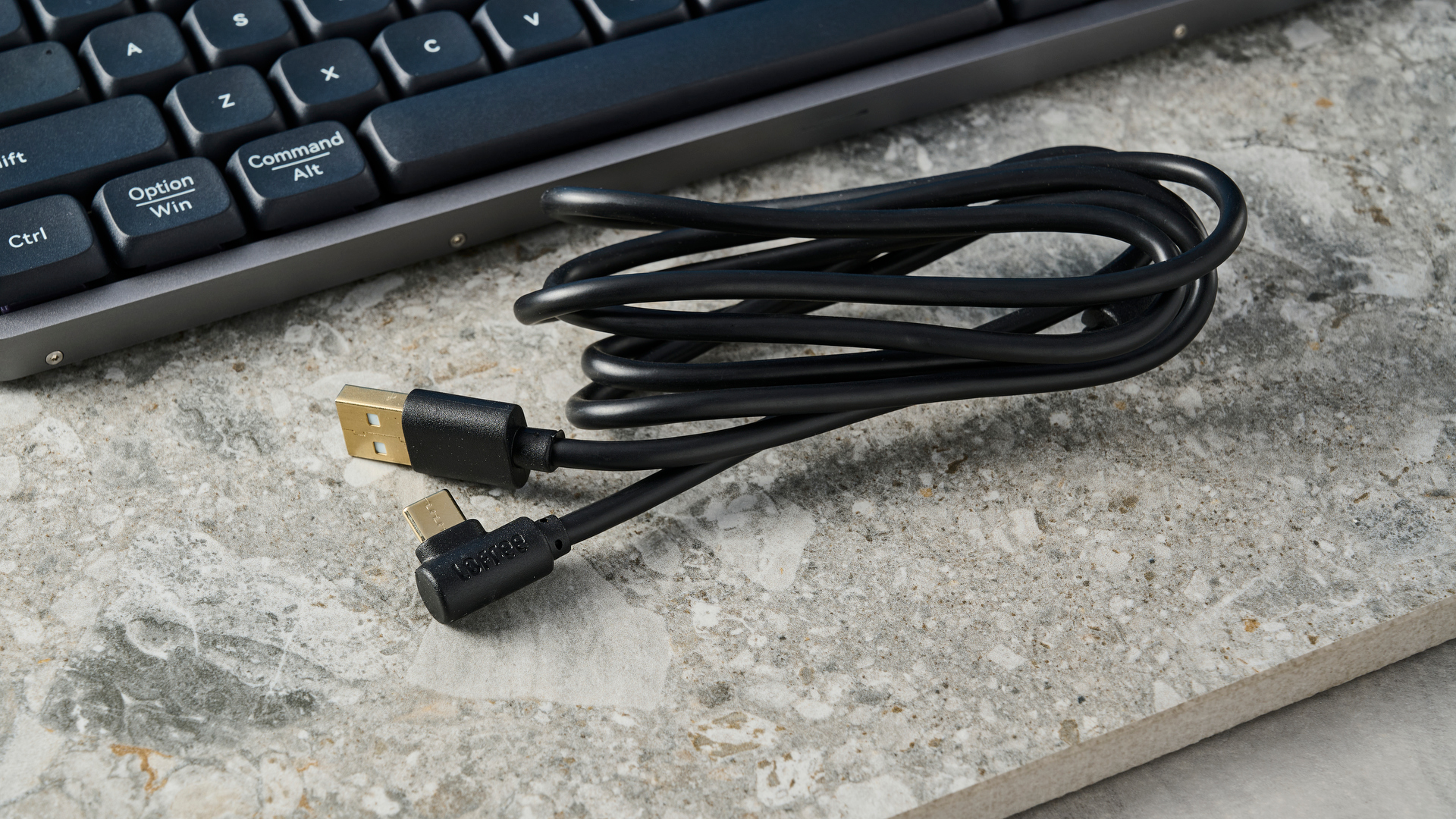
In a board this portable, battery power matters — it's designed to be taken out and about, where every extra hour of charge counts. A 2,000mAh battery sits inside the Flow84, while the Flow100 has a 3,000mAh unit. Both are rather weak compared to the 4,000mAh battery found in the similarly low-profile NuPhy Air75/96 V2, although beefier than the 1,500mAh battery in the Logitech MX Mechanical Mini ($149).
After almost exactly a week of work, my Flow84 ran out of charge — this was a much stronger performance than the 2,000mAh Lofree Block ($169), which lasted under 3 days. Once again, though, NuPhy has proved with the Air75 V2 that low-profile needn’t demand a weak power unit and short battery life (it lasts 3-4 weeks from a single charge, with RGB on).
Lofree Flow84 review: Verdict
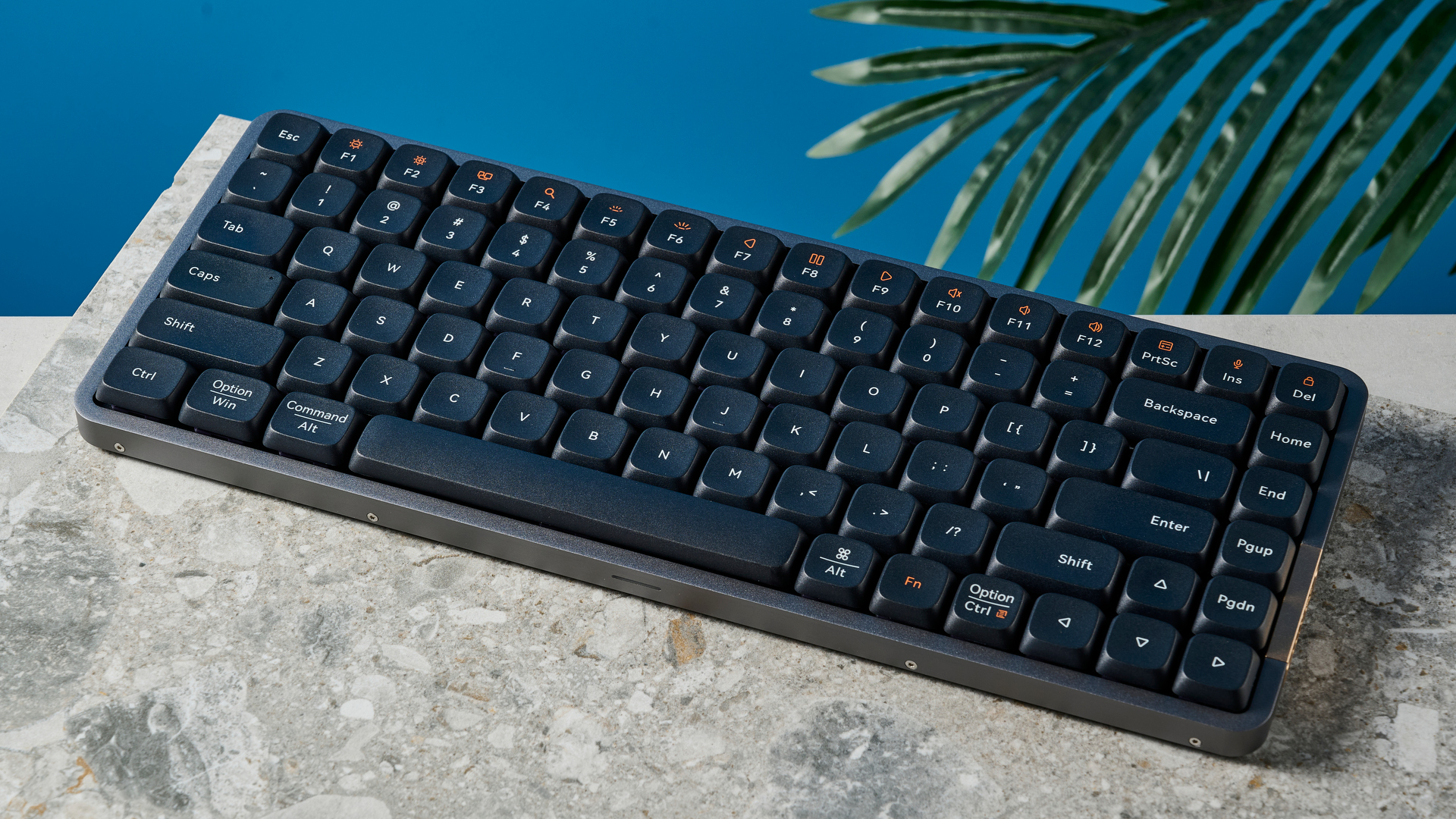
The Lofree Flow looks, sounds and types great. For many out there, that should and will be enough to justify the price. Add in the epic build quality, and you’ll have a keyboard that’ll give you many years of comfortable typing.
It’s in the secondary features that the Flow starts to lose ground against rivals. The rigid switch application may force you to shell out well over $200 if you want clicky switches, or if you want linear switches in a black board, for example. It’s perplexing (and annoying) that Lofree doesn’t let you mix and match, and it feels as though the manufacturer is selling its own board short. Lofree’s lack of a companion app also puts the Flow at a disadvantage versus rivals, especially those running QMK. And the battery feels subpar for a board that is this geared towards portability.
If you’re after a low-profile custom mechanical deck, and value a keyboard’s core elements above everything else, you can look no further. For everyone else, there’s NuPhy.

Peter is a Senior Editor at Tom's Guide, heading up the site's Reviews team and Cameras section. As a writer, he covers topics including tech, photography, gaming, hardware, motoring and food & drink. Outside of work, he's an avid photographer, specialising in architectural and portrait photography. When he's not snapping away on his beloved Fujifilm camera, he can usually be found telling everyone about his greyhounds, riding his motorcycle, squeezing as many FPS as possible out of PC games, and perfecting his espresso shots.

